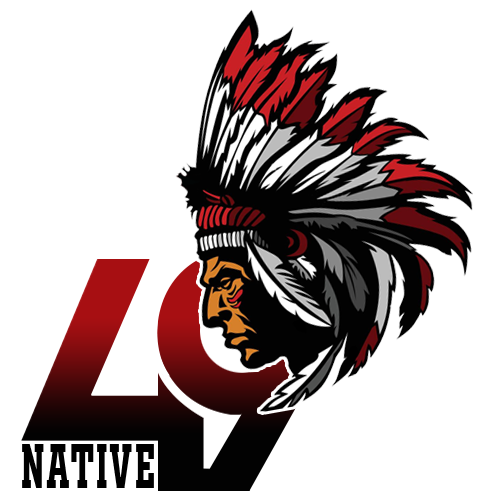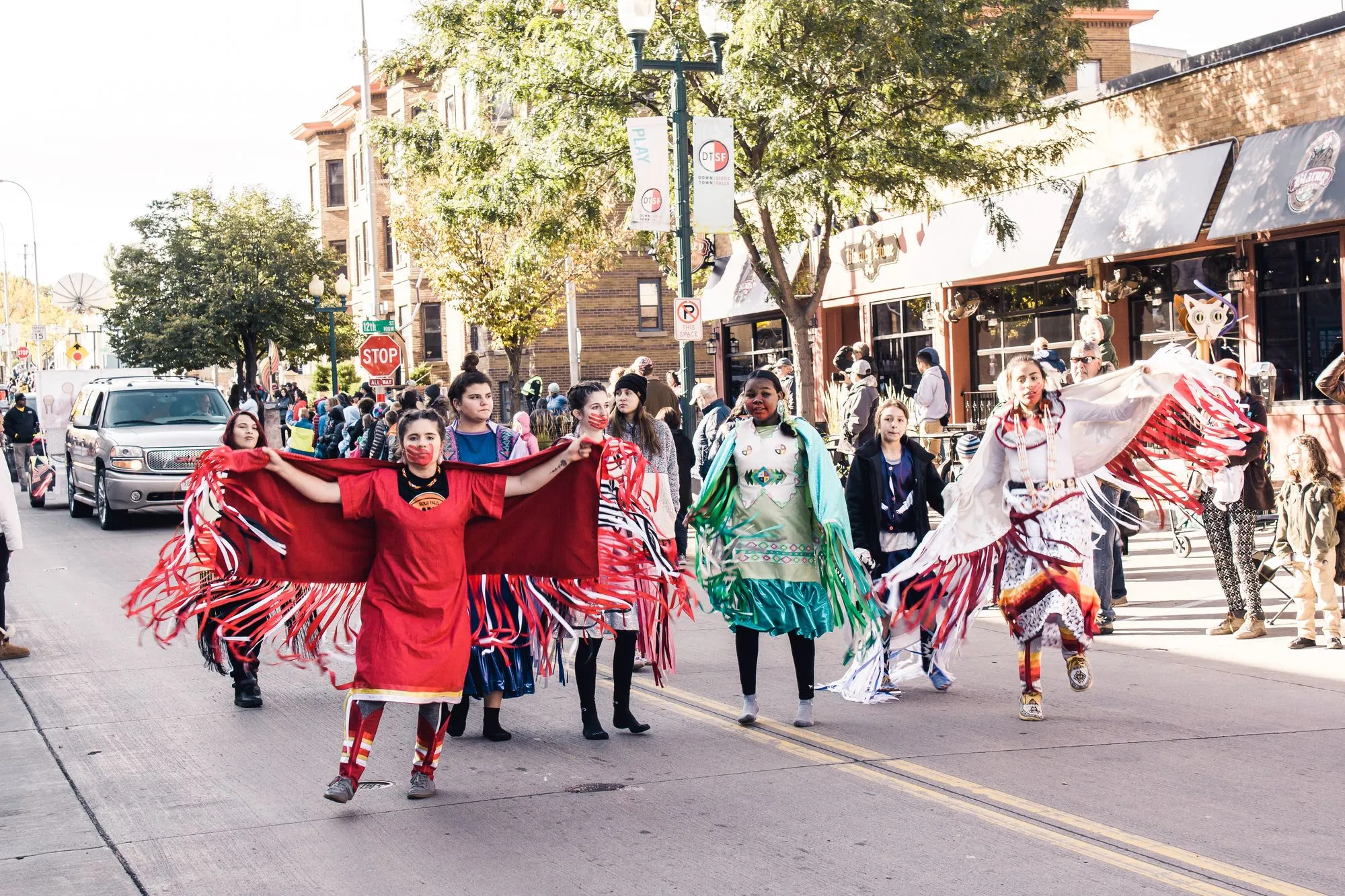Sioux Falls, South Dakota, comes alive with vibrant colors, spirited dances, and the rich tapestry of Indigenous culture during the annual Native American Day Parade. This event is a testament to the resilience and rich heritage of Native American communities.
As the streets of Sioux Falls fill with participants and spectators, the parade weaves together tradition, unity, and a celebration of Native American heritage that resonates with the hearts of all who attend with 49native.
What is Native American Day in South Dakota?
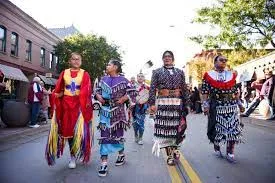
Celebrating Culture and Voicing Concerns
In Sioux Falls, indigenous communities came together to celebrate their rich culture at the Native American Day parade. This annual event serves as a platform to honor traditions and heritage, but it also provides an opportunity for individuals to address the ongoing challenges in the realm of race relations in South Dakota.
Gina Robertson’s Perspective
Gina Robertson, a member of the Sisseton Wahpeton Oyate, shared her thoughts on the state of race relations in her community. She expressed her concerns about the persistent racial disparities that some indigenous people face, particularly in smaller towns in northeast South Dakota. In her words, it’s as if time has stood still, and the atmosphere still carries the weight of the 1950s.
Challenges and the Quest for Change
Robertson’s comments underscore the need for progress in addressing racial disparities and ensuring equal treatment for all residents of South Dakota. She expressed frustration with the current state leadership, including Governor Kristi Noem, and the slow pace of change in the state.
While South Dakota is home to a significant Native American population, making up about 9% of the state’s residents according to census data, the journey toward achieving equitable race relations has faced its share of challenges.
Native American Day has been observed in South Dakota since 1990, as a conscious effort to replace Columbus Day. This change was part of a broader reconciliation initiative initiated by the late Oglala Lakota newsman Tim Giago and the late Governor George Mickelson.
A Complex History
South Dakota’s history is marred by complex and often painful chapters in race relations. From the tragic Wounded Knee Massacre to the erasure of Indigenous culture in boarding schools, the state has grappled with a legacy of systemic injustices.
Modern instances of racial tensions, such as the controversy surrounding a Rapid City hotel owner who barred Native Americans from his establishment, further highlight the challenges that persist in contemporary South Dakota.
A Call for Change and Unity
The Native American Day parade not only serves as a celebration of indigenous culture but also as a platform to advocate for change. It’s a call for unity, understanding, and progress in race relations.
While challenges remain, events like these play a vital role in raising awareness and pushing for a more inclusive and equitable South Dakota. As Gina Robertson aptly noted, the path to change begins with collective action and a commitment to addressing racial disparities.
Why does South Dakota celebrate Native American Day?
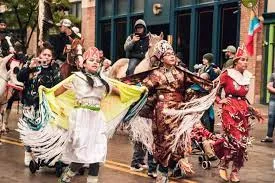
Indigenous Peoples Day: A Multifaceted Celebration
Indigenous Peoples Day, an important observance in the United States, carries a profound and multifaceted significance. Rooted in the recognition of the painful history faced by Indigenous communities, it serves as a day for celebration, protest, and resistance.
A Day to Recognize and Celebrate
Indigenous Peoples Day provides a platform to honor and celebrate the rich cultural heritage, traditions, and contributions of Indigenous people. It’s a time to reflect on their resilience and the profound impact they’ve had on American society. This observance reminds us of the need to acknowledge and appreciate the multifaceted tapestry of Indigenous communities.
A Day of Protest and Resistance
While celebrating their culture, Indigenous Peoples Day also serves as a day of protest and resistance. For many activists, it’s an opportunity to raise their voices against various issues. This includes advocating for environmental justice, calling for the return of Indigenous lands, and demanding justice for missing and murdered Indigenous women.
A Complex History and a Call for Change
The recognition of Indigenous Peoples Day is a result of long-standing efforts by Indigenous peoples dating back to the 1970s. These advocates have worked tirelessly to replace Columbus Day with a day that pays homage to the diverse Indigenous cultures and histories that have existed on this continent for centuries.
Navigating Complex Narratives
The movement to establish Indigenous Peoples Day has not been without its challenges. Some individuals view Columbus as a representative of Italian-American history and have resisted the change. However, Indigenous activists like Nick Tilsen emphasize that it’s not a matter of either celebrating Italian-American contributions or acknowledging the painful history associated with Columbus.
A Call for Inclusivity
Tilsen believes that there is room for both celebrations. Italian-Americans have indeed made significant contributions to the United States, and these should be acknowledged and celebrated.
However, the controversial figure of Columbus symbolizes a painful history of colonization and injustice. It is the celebration of this legacy that Indigenous Peoples Day aims to replace with a more inclusive and historically accurate narrative.
As the observance of Indigenous Peoples Day continues to gain recognition and support, it represents a broader movement toward acknowledging and celebrating the diverse voices and histories that have shaped the American experience. This day is a testament to the resilience and the advocacy of Indigenous communities, as well as a reminder of the ongoing quest for justice and inclusivity.
Read more: Collection Of Native American Day Clipart
When did South Dakota recognize Native American Day?
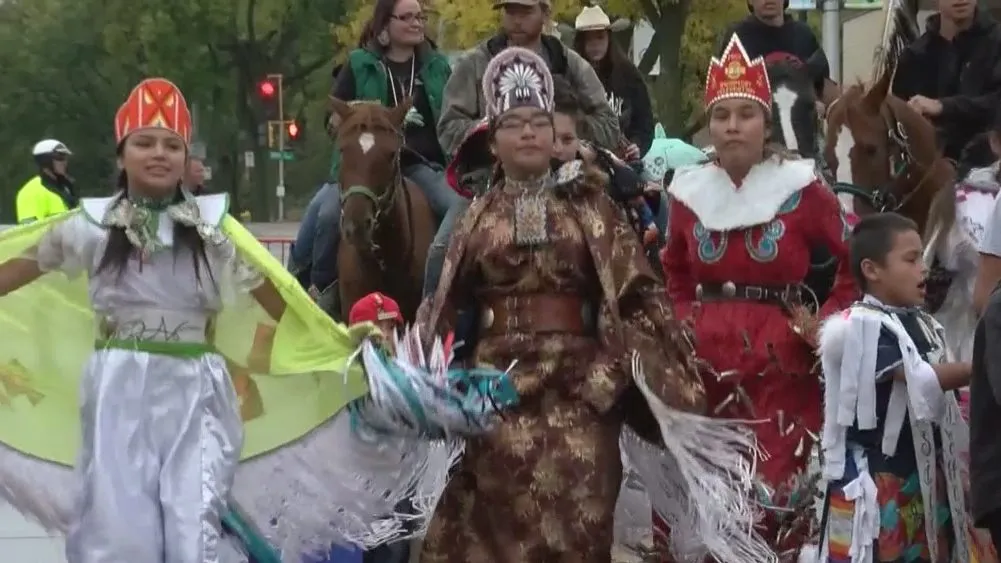
Exploring the Beginnings
Columbus Day, a holiday with a complex and evolving history, has its origins in the late 1700s when it was informally celebrated across the United States. It gained formal recognition in 1892 when President Benjamin Harrison issued a proclamation commemorating the 400th anniversary of Christopher Columbus’s landing in the Americas.
This early celebration set the stage for the diverse narratives that would come to surround this holiday.
Italian Immigration and Shaping Perceptions
A New Wave of Immigrants
The late 19th and early 20th centuries saw a significant influx of Italian immigrants to the United States. However, they faced widespread prejudice and discrimination. In response to these negative perceptions, a group of Italian-American elites embraced the cause of Columbus Day. They argued that the contributions of Italian immigrants played a vital role in shaping America into the nation it had become.
The National Holiday
Official Recognition
In 1934, President Franklin D. Roosevelt designated Columbus Day as a national holiday, cementing its place on the American calendar. However, the celebration of Columbus Day was not solely about honoring the explorer; it played a more complex role in the broader context of American society.
Columbus Day and the New Racial Order
A Changing Narrative
Historian Malinda Maynor Lowery pointed out that Columbus Day contributed to the emergence of a “new racial order” in the 20th century. This order saw the descendants of various ethnic European immigrants being assimilated into the category of “White” Americans. The narrative surrounding Columbus Day played a crucial role in this transformative process.
Challenges from Native American Activists
A Call for Change
Inspired by the Civil Rights Movement, Native American activists in the late 1960s established the Red Power Movement. Built on the principles of self-determination and cultural pride, this movement sought to challenge the prevailing narrative around Columbus Day.
At a 1977 United Nations conference in Geneva, Indigenous delegates from around the world came together to declare their solidarity with the Indigenous Peoples of the Americas, resolving to observe October 12 as an International Day of Solidarity.
A Gradual Shift in Perspective
Changing Traditions
Although it took time, the calls for change began to gain traction. South Dakota became the first state to officially observe the day as Native American Day in 1990. In 1992, the city of Berkeley, California, made a significant move by adopting Indigenous Peoples’ Day in protest of the 500th anniversary of Columbus’ arrival in the Americas.
Since then, the observance has continued to grow, with numerous states and over 130 cities embracing a more inclusive perspective on this historic day.
As the narrative of Columbus Day continues to evolve, it reflects a broader societal transformation toward a more inclusive understanding of history and the multiple voices that have contributed to shaping the American experience
Is Native American Day a state holiday in South Dakota?
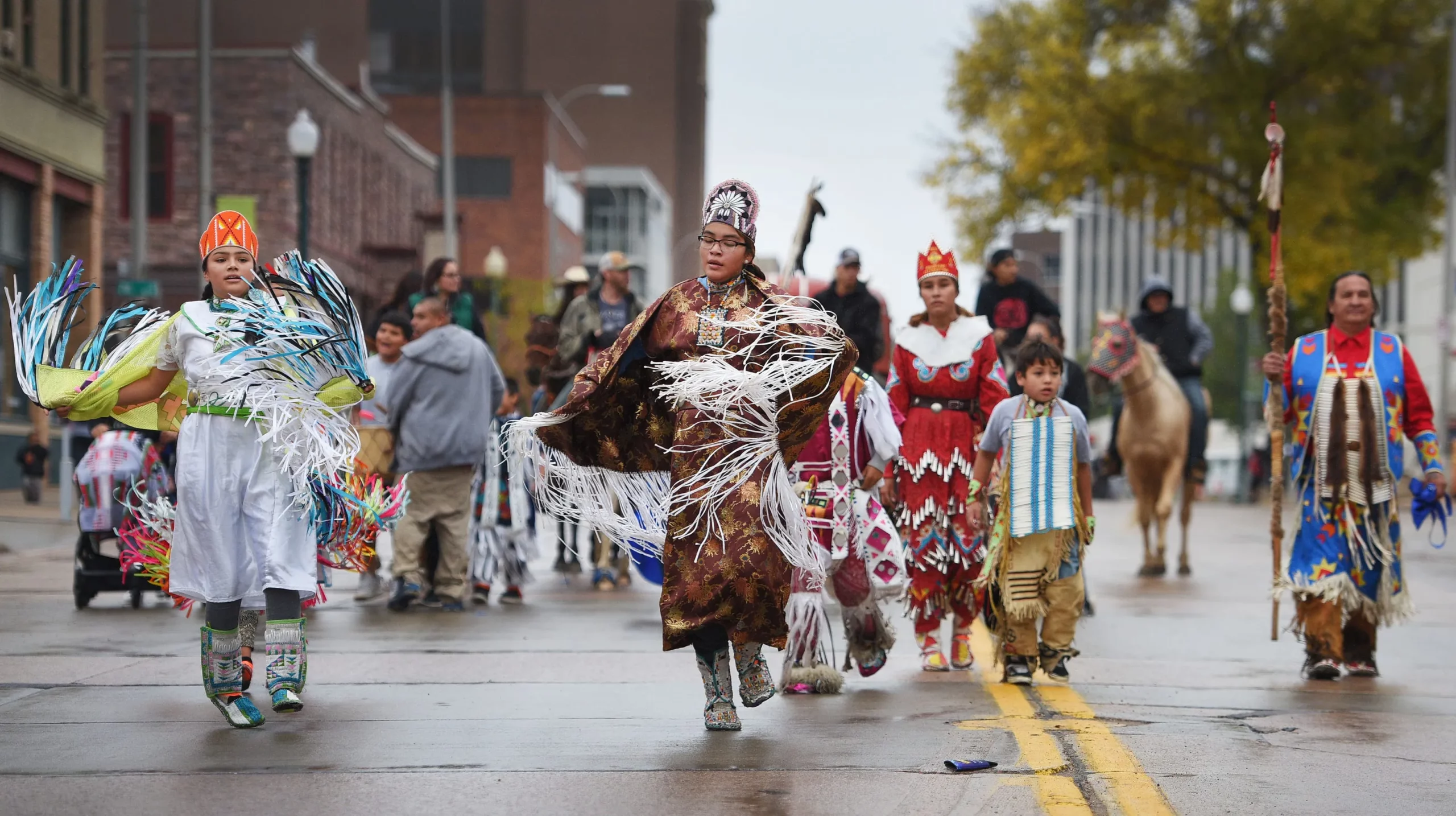
Columbus Day, a once widely celebrated holiday, has undergone significant changes over the years. While in the past, it was observed by only 25 states and the District of Columbia, today, it reflects a complex tapestry of cultural and historical perspectives.
Shifting Away from Columbus
A Changing Landscape
In 2009, California and Delaware took a remarkable step by completely dropping Columbus Day as a holiday. Delaware replaced it with a floating holiday for state workers. The evolving sentiments regarding Columbus Day are evident, with multiple states opting for a more inclusive approach.
A Day for Indigenous Peoples
Renaming and Retaining
In 2019, Maine, New Mexico, Vermont, and the District of Columbia took a distinct path. They renamed the day as Indigenous Peoples’ Day while still maintaining it as an official holiday. Vermont, in particular, allows its state employees to use it as a floating holiday, reflecting the inclusive spirit of the change.
Diverse Celebrations Across America
A Glimpse into the Varieties
Across the United States, Columbus Day has transformed into various celebrations. Hawaii acknowledges it as Discoverers’ Day but can’t designate it as an official state holiday due to the law. In Puerto Rico, the day is commemorated as Día de la Raza (Descubrimiento de América), honoring Latin American peoples and cultures, with an additional celebration of Día del Descubrimiento de Puerto Rico on Nov. 19.
Honoring a Different Hero
Frances Xavier Cabrini Day
Colorado, the first state to designate Columbus Day as a state holiday over a century ago, replaced it in 2020 with a new state holiday honoring Frances Xavier Cabrini. This Catholic nun and Italian immigrant founded numerous schools, hospitals, and orphanages to serve poor immigrants, ultimately becoming a saint in 1946.
Native Americans’ Day
South Dakota’s Perspective
Since 1990, South Dakota has observed Native Americans’ Day on the second Monday in October, emphasizing the importance of Native American culture. Tennessee officially observes Columbus Day but has the flexibility to move the observance to the Friday after Thanksgiving for a more extended weekend.
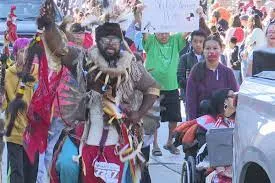
Alternative Monikers
A Dual Celebration
Nebraska and Rhode Island chose to recognize Indigenous Peoples‘ Day alongside Columbus Day. This dual celebration underscores the changing narrative and emphasizes the significance of Indigenous Peoples.
Varied Celebrations
Distinct Traditions
Even within places where Columbus Day is still observed, alternative monikers are given. The U.S. Virgin Islands focus more on Virgin Islands-Puerto Rico Friendship Day, which coincides with Columbus Day. Alabama dedicates the second Monday in October to Columbus Day, American Indian Heritage Day, and Fraternal Day, honoring various social and service clubs.
A Shifting Perspective
A New Perspective on History
Columbus, Ohio, altered its observance in 2020, renaming the holiday Indigenous Peoples’ Day to reflect changing cultural values. Conversely, Columbus, Georgia, maintains the day’s original name, highlighting the diverse approaches taken toward this once-traditional celebration.
From Italian Heritage to Diverse Perspectives
The Evolution of Columbus Day
Originally conceived as a celebration of Italian American heritage, Columbus Day gained federal recognition in 1937, primarily due to lobbying by the Knights of Columbus. The holiday underwent a significant shift in 1971 when it was moved from October 12 to the second Monday in October.
Advocating for Change
The Push for Indigenous Peoples’ Day
In recent years, Native American groups and critics have advocated for a change in the holiday’s focus. They point to Columbus’ mistreatment of native populations and the legacy of European settlement.
Some states and numerous cities, such as Alaska, Iowa, Michigan, Seattle, San Antonio, Houston, and Boston, have recognized Indigenous Peoples’ Day instead. While not always enshrined in law or as an official permanent public holiday, these changes represent a broader shift in perspective on this historic day.
The evolution of Columbus Day underscores the dynamic nature of American culture and the ongoing reevaluation of historical figures and events.
Facts About Native American Day Parade Sioux Falls
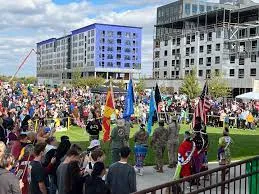
After a two-year hiatus caused by the global pandemic and the passing of a respected community leader, the South Dakota Urban Indian Health (SDUIH) is set to host its annual Native American Day Parade once again. The parade, which marks its third year in Sioux Falls, is a testament to the resilience and commitment of the Native American community in celebrating their culture.
Why the Parade Matters
The Native American Day Parade is more than just a procession; it’s a symbolic and unifying event. This year’s theme, “We walk with our teachers,” serves as a tribute to all teachers, whether in the classroom or in everyday life. The parade aims to not only bring together the Native American community but also extends a warm invitation to everyone interested in learning and celebrating Native American culture.
Char Green, one of the parade organizers and grant project managers with SDUIH, emphasizes the importance of community wellness. She believes that the act of gathering, building relationships, and engaging in face-to-face interactions plays a significant role in the well-being of Native people and their broader community.
A Celebration for All
It’s important to note that the Native American Day Parade is open to everyone, regardless of their cultural background. The event is an opportunity for people of all walks of life to come together, learn, and appreciate the rich tapestry of Native American heritage.
What You Need to Know
- Native American Day is officially observed in South Dakota on the second Monday of October. It’s a day dedicated to celebrating the vibrant and diverse culture of Native Americans.
- The idea for the parade originated more than five years ago within the local community. Over time, Char Green assumed a key role in the parade’s organization, and SDUIH emerged as a vital community partner.
- The parade faced a two-year interruption due to the COVID-19 pandemic, with one year conducted remotely and the other dedicated to honoring the memory of the former CEO of SDUIH.
- This year, the parade is reaching out to a broader audience, welcoming more committee members from outside SDUIH. The intention is to ensure the parade’s continuity within the community, passing it down to younger generations and keeping it firmly rooted in the hearts of the people.
The return of the Native American Day Parade is a heartwarming symbol of resilience, unity, and a commitment to preserving and sharing the treasured culture of Native Americans. It invites us all to come together, celebrate, and learn, as we walk hand in hand with our teachers, appreciating the profound beauty of indigenous heritage.
